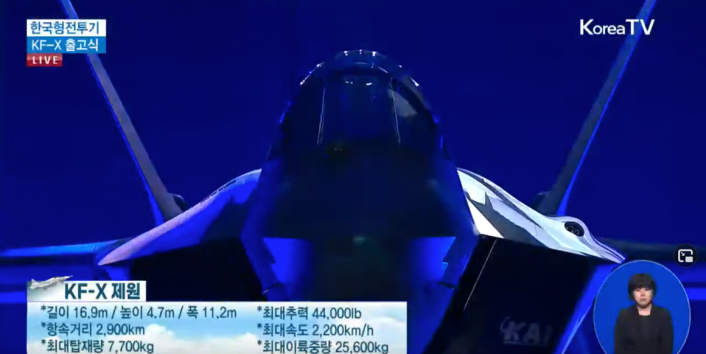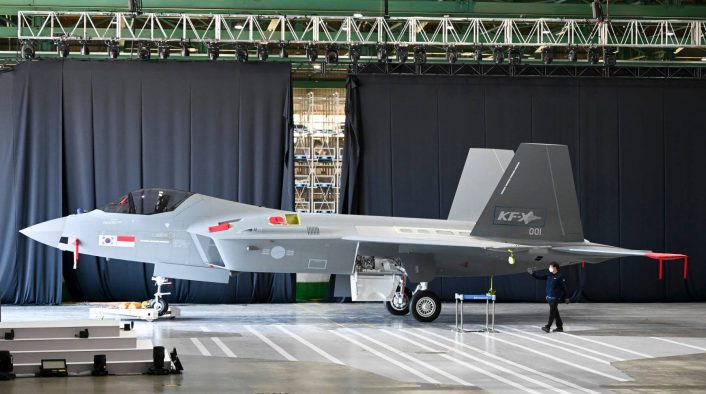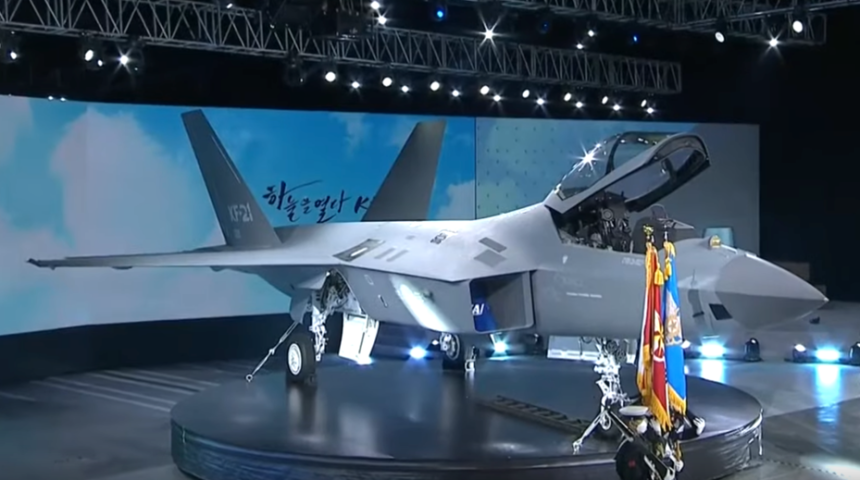The new South Korean next generation fighter, the KF-21 “Boramae”, appears to be an F-22 look-alike.
South Korea’s President Moon Jae-in unveiled the first prototype of the KF-X, the next-generation fighter developed by KAI (Korea Aerospace Industries), on Apr. 9, 2021. Dubbed the KF-21 “Boramae” (Korean for “Hawk”), the aircraft is a low-cost, less-stealthy alternative to the American F-35, that the ROKAF (Republic Of Korea Air Force) plans to field by the 2030s, to replace its fleet of ageing F-4E Phantom and F5E/F Tiger II aircraft.
“A new era of independent defence has begun,” Moon said, according to a transcript released by his office.
The unveiling, attended also by representatives from Indonesia, which partnered with South Korea on the project, was held at the KAI headquarters in Sacheon and streamed live on Youtube.
KAI plans to start ground testing of the KF-21 this year with first flight targeted for May 2022. Six prototypes will be built to support the testing campaign that is expected to last until 2026. According to Moon, South Korea should have at least 40 of the KF-21s combat-ready by 2028, and 120 by 2032.
Dealing with the overall shape, the KF-21 is strikingly similar to the other new or 5th generation designs (although it is considered a 4.5 gen. aircraft): in particular, the South Korean jet shares much resemblance with the F-22 Raptor including the similar canted twin tails, general nose section and inlet shapings. Interestingly, the “Boramae” also sports a conformal gun above the left air intake, as the F-35A.
Dealing with the dimensions and performance, some were provided by the Korean TV during the ceremony: length is 16.9m, wingspan is 11.2m and height is 4.7m. The top speed is 2,200 km/h and the range 2,900 Km.

Interestingly, unlike the other next-generation aircraft, which have all been designed to be single-seat only, there will be also a two-seater version of the KF-21 and two prototypes will reportedly be two-seaters.
As for the markings applied to the aircraft, the first prototype is marked 001, has a large KF-21 logo on the tail, the ROKAF roundel on the outer side of the intake and the South Korean and Indonesian flags on the left had side of the nose, just below the cockpit. Indeed, South Korea and Indonesia agreed in 2014 to jointly develop the fighter in a project worth 7.5 trillion won (6.3B US), with Indonesia committed to paying 20% of the total development cost. However, beginning in 2018, Jakarta sought to renegotiate its share of the cost.
According to Reuters, Indonesian Defence Minister Prabowo Subianto discussed the issue with Foreign Minister Chung Eui-yong during a visit to Seoul, with both sides agreeing to hold high-level talks about security cooperation. However, no mention to the cost dispute has been done by both sides.
Therefore, while KAI has plans to sell the type internationally, the export potential of the new fighter is still unknown.










